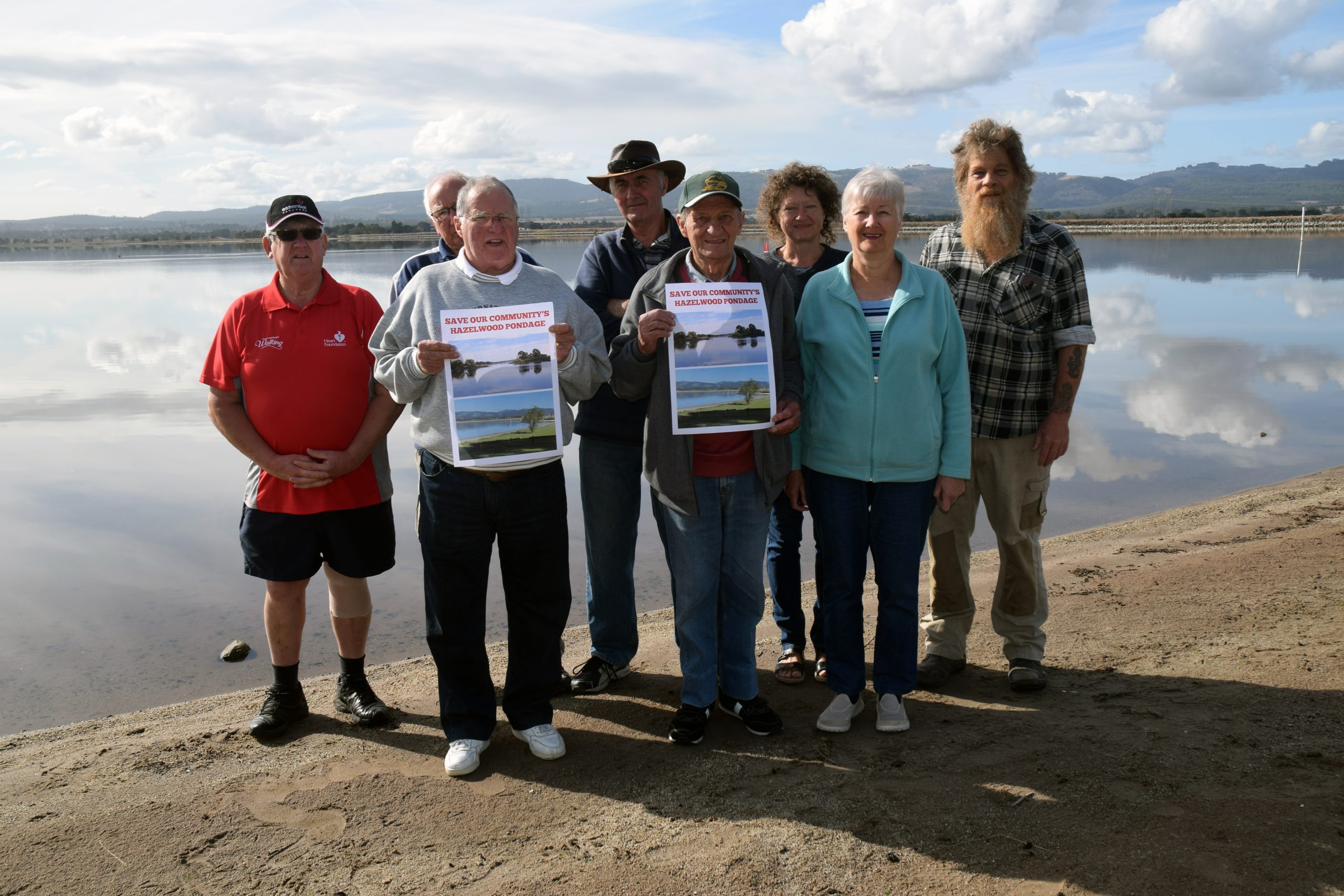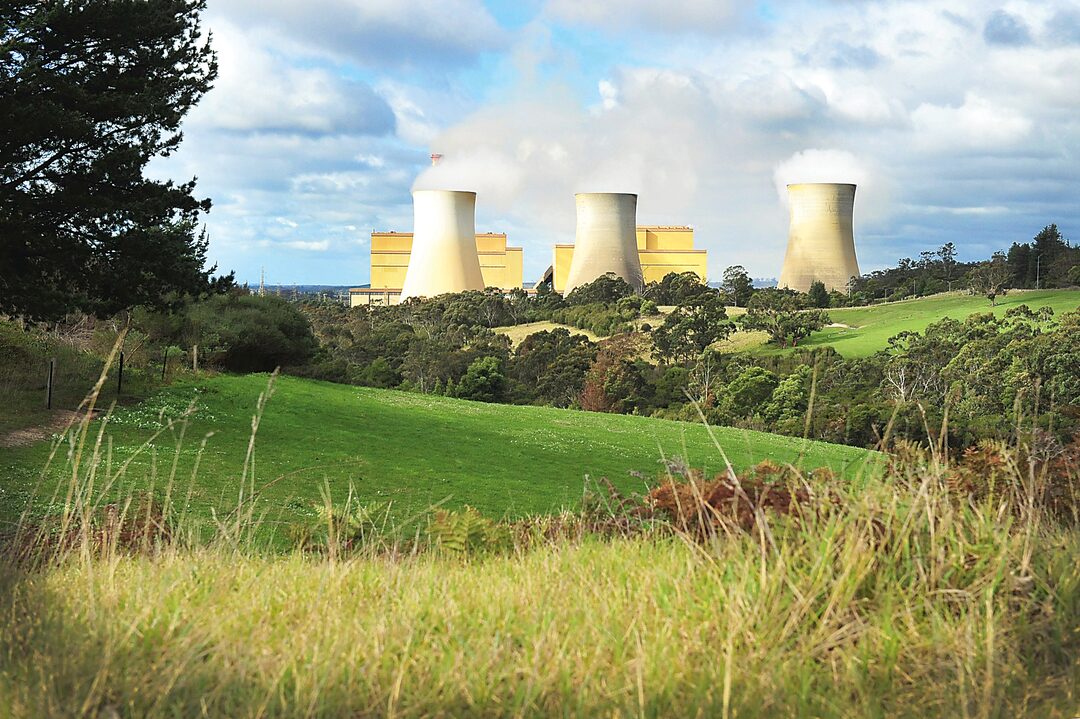By PHILIP HOPKINS
ENERGY Australia will convert the Yallourn W coal station site into a low-carbon emissions hub supplying data centres, industry and households, in an ambitious plan that will cost more than $5 billion.
Energy Australia, which is Australia’s third-largest electricity and gas retailer, said the scheme that it has quietly developed as the coal plant moves towards closing in 2028, will mean the Latrobe Valley has a long-term future in power supply, the Australian Financial Review reported.
EnergyAustralia’s chief executive, Mark Collette, said the age and inflexibility of the 1480-megawatt coal generator, and its struggles to remain reliable and profitable amid the rise of renewables, meant extending its life was not on the agenda, despite speculation it will run for longer because of the uncertainty how quickly renewables can be rolled out.
The company, owned by Hong Kong-listed CLP Group, has drawn up plans for what it calls the ‘Yallourn Energy Security Precinct’, where gas power and solar generation alongside large-scale battery storage will use the huge site, its access to water and its connection to the grid.
“The site’s been running for 100 years, and we’d love to see it run in some capacity for another 100 years,” Mr Collette said in an interview with the AFR.
“It’s clearly not going to be on brown coal if we’re looking 100 years into the future, but data centres, solar, batteries, gas-fired generation that can back up a renewable system – they all look quite prospective.”
The first stage of the new precinct would be a gas power plant that could ultimately supply up to one gigawatt of power, and a similarly sized lithium-ion battery with capacity for eight hours of storage. The gas power would come online by the middle of the next decade.
Mr Collette said that while EnergyAustralia had yet to “bring the business case to life” and nail down gas supplies and other elements, he saw a clear role for gas-fired power to allow other Victorian coal stations, including AGL’s Loy Yang A, to close. “Whether it’s a bit earlier or a bit later for the other technologies, we think there’ll be an opportunity,” he added.
Mr Collette said EnergyAustralia had held early discussions with data centre operators about the opportunity and was “quite optimistic” about the prospects for that industry to set up around Yallourn, given its access to transmission, water and power. But he also pointed to “challenges”, including access to fibre optic cable capacity into Melbourne.
“There’s some real advantages to Yallourn and at the full scale, it could well be $5 billion-plus,” he said.
“Having said that, it’s a competitive market out there, and we’ll have to prove that this is the best site for those technologies.”
Energy Australia is installing the Wooreen 350MW megawatt battery at the Valley’s Jeeralang gas power station that the company refurbished two years ago.
The Federal Member for Monash, Mary Aldred, said the planned Yallourn project was welcome news for the Valley and Gippsland.
“If state and federal Labor governments get out of the way, it can be great news nationally,” she told the Express.
“Gas is critical for stabilising the grid as part of the energy transition. We absolutely should be incorporating a gas-powered plant into the energy pipeline.”
Ms Aldred said Yallourn supplies up to a quarter of the state’s baseload electricity needs.
“It concerns me greatly that we are scheduled to lose that in only three years’ time with nothing available to supplement it,” she said.
“I’ve been saying for a long time that data centres will be critical to our data sovereign ty in Australia. We need to be holding as much data as we can onshore. To do that, we need data centres, we need a lot of energy. All of these opportunities present a highly skilled, highly paid jobs future for our region.”
At the Gippsland New Energy Conference earlier this year, the Mining Energy Union warned that renewables would never replace the jobs lost in the Valley’s coal-fired power stations and that the Gippsland offshore wind industry would not be ready to operate when Yallourn closes in 2028.
The number of jobs involved in renewables was low and earliest offshore wind farm would not start fully operating until 2032-33, the union said.EnergyAustralia had already started a transition in its energy assets, the AFR reported.
Apart from the Jeeralang developments, the company last year brought online a gas power plant in NSW’s Shoalhaven region, which it has used more than expected. It has also revived plans to build a gas power plant at Marulan, south of Sydney, and this year partnered with French giant Electricite de France for a pumped hydro project near Lithgow.
EnergyAustralia had previously started to implement plans for gas power at Yallourn, applying for permits and negotiating with turbine manufacturers, but they were put on ice after the carbon price was scrapped.
The Australian Energy Market Operator forecasts that the National Electricity Market will require 15 gigawatts of gas power generation over the next 20 years to support intermittent renewables. This implies a significant expansion, given that some existing plants are nearing retirement.
EnergyAustralia’s rivals, including AGL, all have gas power growth plans, but the exclusion of gas from the federal government’s Capacity Investment Scheme and from some state-based underwriting programs has made the business case more difficult.
A multibillion-dollar investment at Yallourn would require co-investment partners at a time when CLP has been looking for a partner for EnergyAustralia to bring in new sources of capital, the AFR said. The company had been in talks on a potential $10 billion merger with Alinta, which owns the Loy Yang B power station.
Mr Collette declined to comment on discussions with Alinta but noted that the strategy over the past 12 months had been to link with partners at the project level, including Thailand’s Banpu for the Wooreen battery and EdF for Lake Lyell hydro. That would apply also for Yallourn.
“We have a huge portfolio of opportunities in things like the Yallourn Energy Security Precinct, and we do expect that we will both explore and find capital partners at a bigger scale as we need them.”
EnergyAustralia’s earnings from the Yallourn coal plant, Australia’s most carbon-intensive, have taken a hit from an unexpected breakdown in late August of one of its four turbines, taking it offline until mid-January. The failure came not long after the completion of a $400 million, two-year maintenance program across all four turbines that was intended to ensure reliable performance through to the generator’s closure.
Longer term, the economics of the plant just don’t work, Mr Collette said.
Yallourn’s old, inflexible technology limits its ability to ramp down during sunny hours when wholesale prices often sink below zero, unlike EnergyAustralia’s more modern Mount Piper coal generator in NSW.
“The days of 24/7 base load power, generating the same hour after hour, they’re numbered,” Mr Collette said.
“It’s not a lack of coal that spells the end of Yallourn – it is those market factors.”
Speaking at an Energy Week conference last year, Mr Collette said gas-fired power generation was integral to a successful energy transition, which costs an estimated $320 billion and requires 10,000 kilometres of new transmission.
“It’s the biggest engineering project in our history. Australians are beginning to understand the physical and technological challenges of the energy transition. Australia must sort out supply chain constraints, planning challenges and community support …and has no option but to work through all these issues,” he said.
“The existing coal fired electricity system is… increasingly fragile. Investment cases to maintain coal power stations in the face of policy pushing rapid transition are tough. There is a limit to extending the life of old power stations, particularly at short notice.”
Mr Collette said customers want predictability in energy prices and bills.
“Customers expect prices to move something in the range of flat to inflation levels and when this does not happen, they are unhappy. Customers expect when they reduce usage that their bills will go down and feel trapped when this does not happen,” he said.
Mr Collette said customers spent money on solar, an investment for the next 20 years, because they expect it will reduce their energy usage and value the predictability they see from this action.
“Predictability is not a feature of Australia’s energy system today. The long-term interests of consumers of energy are not being met. Consumers want efficiency to deliver predictability not volatility,” he said.
Network and transmission costs were predictable drivers of every bill but were rising fast.
“The wholesale part is less predictable. The reason is that the wholesale market is fundamentally designed around volatility, around scarcity driving investment,” he said.
In the 1990s to early 2010s, the national energy market (NEM) was efficient and predictable, with some of the lowest energy costs anywhere.
“But as Australia embarks on transforming its energy supply… Australia is seeing insufficient investment in the new system on top of a rapidly aging installed system. This is a market primed for unpredictability. Of course, there are solutions. The challenges are exacerbated by policy, regulatory and commercial decisions and these can be changed.”
Mr Collette said gas-fired power generation was needed to protect reliability.
“Storage is one way to deal with no wind or sun. However, there still needs to be enough wind and sun to charge the batteries and hydro. A low-sun, low-wind week just does not have enough energy to charge the batteries or pumped hydro,” he said.
“This is why Australia’s renewables-based energy system needs lots of solar, lots of wind, lots of storage and gas fired generation in reserve. Gas generation will predominantly play a reserve role. While gas generation will run infrequently, gas generation will be essential for reliability in those days and weeks when it does run. Without the gas, there is no way through other than coal,” he said.
Dan Nugent, Trading and Transition Executive at EnergyAustralia, said the retirement of Yallourn power station marks not an ending, but a new chapter for the Latrobe Valley.
“We are excited to be exploring transformative energy developments at this historic site that will continue to position our region at the forefront of Victoria’s energy future,” he told the Express.
“These proposed developments represent our commitment to ensuring the Valley continues to power Victoria for generations to come. By embracing new energy technologies and opportunities, we’re creating a pathway that honours our proud energy heritage while building the reliable power infrastructure our state needs.”
Mr Nugent said with developments like the Wooreen Energy Storage System already underway, “we’re determined to ensure our region remains essential to Victoria’s energy security while leading the transition to a sustainable future”.
“Wooreen and the proposed developments at Yallourn would connect into existing power lines and transmission infrastructure, which helps to reduce the cost of the transition,” he said.











